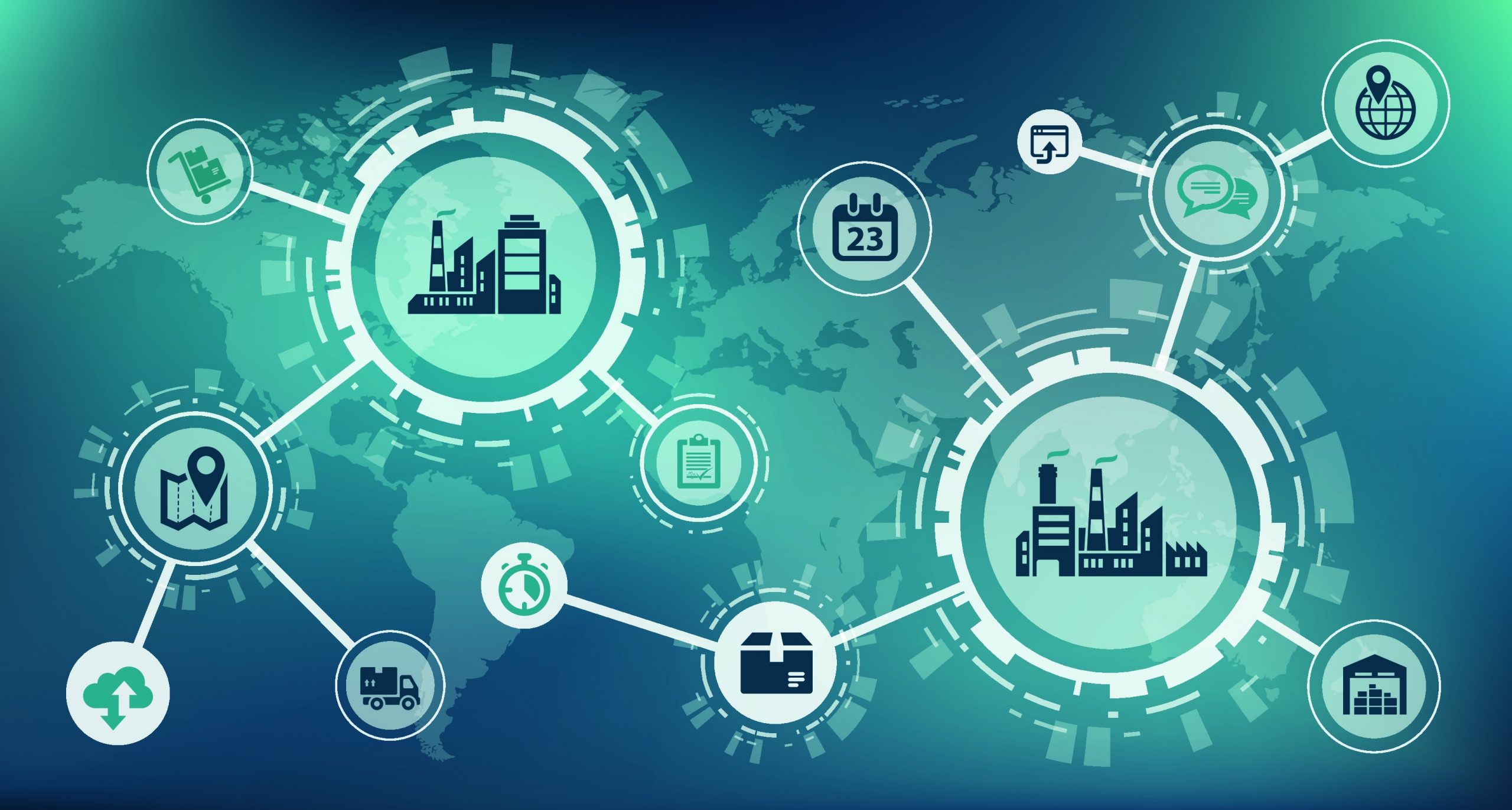
Demystifying terminology behind Integrated Business Planning in a connected Supply Chain
Learn how supply chain management concepts, such as control towers, dovetail with other concepts, like middleware, and how Logility and Demand Solutions can simplify your integrated business planning – IBP.
Thanks to disruptions in the supply chain over the last year or so, industry thought leaders are introducing a raft of new terminology in an attempt to help firms adapt. Companies must make better use of data so that they can respond proactively to changes in demand.
What new terms like “middleware” and “control tower” actually mean in the context of integrated business planning (IBP), however, can be a little confusing. There are so many related and overlapping definitions, getting a clear picture is challenging, even for the most experienced supply chain managers.
Control towers: what are they and what role do they perform?
Supply chain companies need tools that let them monitor and direct their activities from central consoles that integrate data from multiple sources. Control towers act as hubs that collect real-time information flows from a company’s existing systems and combine them into a seamless whole that operational managers can then use to improve efficiency.
In the past, setting up a control tower was a challenge. Different functional processes sometimes required the stitching together of otherwise incompatible technology platforms. Some database technologies were read-write, while others were read-read, analytical, or transactional, and software engineers and data scientists had to write bespoke code to get them to work.
However, thanks to the PDM in the Platform, that is no longer the case. Businesses wanting to perform these types of systems integrations are no longer first-movers. Many supply chain firms using SAP, Oracle or Microsoft Dynamics have already developed systems to bring these data flows together to create a control tower, meaning that new software can simply leverage work that’s already been done.
To qualify as control towers, IBP processes must offer visibility, analytics, and execution. Managers should receive a continuous flow of real-time, end-to-end data from all parts of the supply chain so they can manage demand. Suppliers, distributors, and manufacturers should all be feeding into the system, allowing operatives to get a picture of “what’s going on right now.”
Control towers also need to give managers access to analytical tools that allow them to identify why certain things are happening and what might be coming down the pike. Solutions, therefore, need to include diagnostic tools that allow analysts to get to the bottom of a supply chain bottleneck issue and perform “what if” scenarios. Managers need access to analytics that let them assess risk and effectively marshal resources in response to a crisis.
Lastly, control towers facilitate execution, providing supply chain managers with the ability to issue and implement directives. Quality systems permit information dissemination back out through the system to colleagues on the ground, letting them respond directly to emerging market conditions and ensure compliance.
Thus, a control tower is more than a tool that passively observes supply chain status. It also permits two-way and network communication between managers and operatives, providing a command-and-control element to IBP systems.
Please note that control towers are not a direct replacement for data management and transactional systems. They do not provide data storage and tabling functions. Rather, firms should view them as funnels that collate incoming information from common data sources. They are not suitable for companies using 3PL solutions.
What is middleware?
Conceptually, control towers are separate from the software that stitches them together.
A control tower is simply any system that permits visibility, analysis, and execution over a supply chain, while middleware is the practical programming that knits systems together.
Traditionally, middleware lies between an operating system and the applications running on it. It functions as a hidden translation layer, enabling communication and data management for distributed applications. Some commentators call it “plumbing,” because it acts as a “pipe” that permits data sharing between applications.
Middleware allows users to perform various requests, such as submitting forms on a web browser or allowing web servers to return dynamic web pages based on user profiles. Common middleware examples include database middleware, application server middleware, message-oriented middleware, web middleware, and transaction-processing monitors.
Each program typically provides messaging services so that different applications can communicate using messaging frameworks, like simple object access protocol (SOAP), web services, representational state transfer (REST), and JavaScript object notation (JSON). While all middleware offers communication functions, the type your company chooses will depend on the service and the type of information requiring communication. Security authentication, transaction management, message queues, applications servers, web servers, and directories will all require different approaches.
In the past, technology was the central limiting factor preventing supply chain companies from building control towers for next-generation monitoring and execution. But in 2021, that is no longer the case. Software, sensors, and the cloud are making it possible to meet today’s unique challenges and demands.
Data scientists are becoming more prevalent to help manage the integration of data from increasingly disparate data sources in a way that is presentable. They’re taking existing supply chain technology, such as ERP and warehouse management information, and using that to construct data portals that provide real-time overviews of operational status.
The cloud is also allowing end-to-end connection of nodes across the supply chain, without the need for a fixed execution platform. Intra-firm systems do not necessarily require a
connection. Instead, managers and colleagues can outsource software elements to third-party servers and connect to them via the internet, whether in the office or the field.
Supply chain control towers are also being enabled by the growth of data availability and advances in analytics. Managers can now appraise their supply status across the entire network and then use that to automatically generate planning scenarios or adjust to changes in demand.
Applying Control Towers In Your Organization
If your company is looking to move towards IBP, the abundance of terminology can sometimes feel a little overwhelming. You know that you need to improve your business processes, but you’re not entirely sure how to go about it practically.
Supply chains today rely on manual data gathering across systems and roles, periodic batch data, and cadence-based planning and decision-making. However, in 2020, the pandemic gave many companies a wake-up call, showing them that these old collection and integration methods were insufficient. The digital supply chain of the future requires a network of connections, real-time multi-source information, and continuous event-driven planning and decision-making. “What if” simulations should be automatic (not manual), and collaborations should be digital.
Getting from where you are now to where you would like to be, however, isn’t always clear. Using middleware to stitch together systems can be complicated, even if you go down the template route.
Logility and Demand Solutions’ offers a solution. Our management layer connects your platform to the other data sources via APIs so you don’t have to, preserving your ICT resources.
You can think about this service using the following sports analogy: When you watch sports live, someone has blended the audio and visual feeds from the different cameras and combined it with the commentary teams through to the myriad of technical and human interventions to get to your screens. It is such a powerful experience – almost like you are living the event with the team. As a sports spectator, the mechanics of it all are less interesting to you, than watching the game and knowing the result. Using a Control Tower to manage your integrated business planning processes – is a bit like this. The concern is less about where the data comes from, it is more that the information is current and usable.
Connective platforms are becoming the latest best-in-breed for IBP. But connecting different data from different sources and applications can be a major headache, especially if you go down the bespoke route. Custom coding is expensive and brittle. And mixing platforms is challenging and requires specialist skills.
Logility and Demand Solutions takes a different approach. We tailor your IBP, but we don’t customize it. We use common platform components and ERP templates that use blocks of robust code to assemble middleware according to your requirements. Where possible, we generalise systems into reusable components that are easy to update and enhance.
If you’re struggling to create a control tower built on reliable middleware, why not let us do it? We have multiple pre-existing integrations set up with the major ERP suppliers, and other more obvious connections. And so we already have a platform in place to create tailored integrations. Why reinvent the wheel, when we’ve already done it for you?
We have pooled our years of experience to produce a number of KPI reports. With us, you can create a brand new IBP using control towers in just six months, moving from your current passive setup today to active operational management, based on robust middleware. Advantages include continuous improvement, monitoring execution compliance, disseminating actions plans, and alarm generation.
Demand Solutions and Logility can show you where you are right now regarding supply chain management and where you could end up with better systems. You’ll get a roadmap that shows you how you can slowly improve your IBP over time and gain new capabilities, mitigating the risk of too much change, too fast.
Control towers are a new concept, but they have come along at just the right time. Who knows what challenges 2021 will bring?
Are you embarking on an IBP Project that you would like to discuss with our supply chain consultants?
Email: cmason@demandsolutions.com
Call: +44 (0) 1227 949 506


